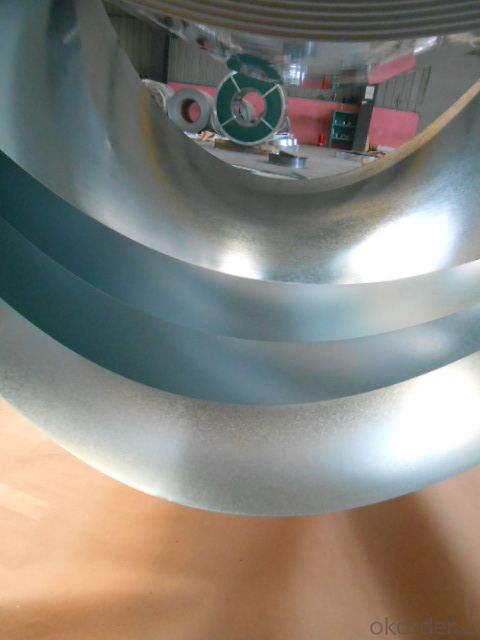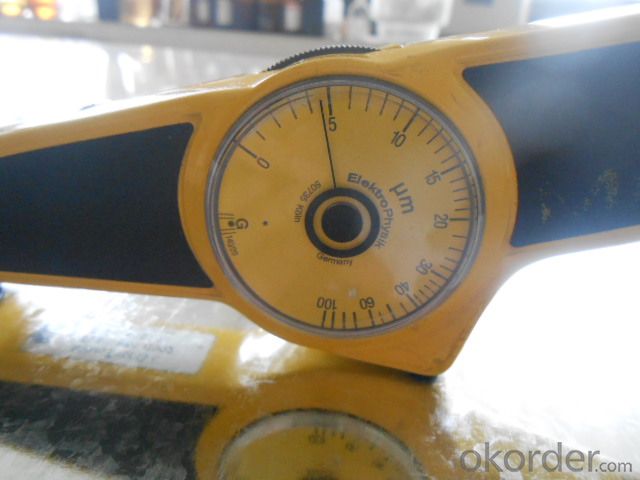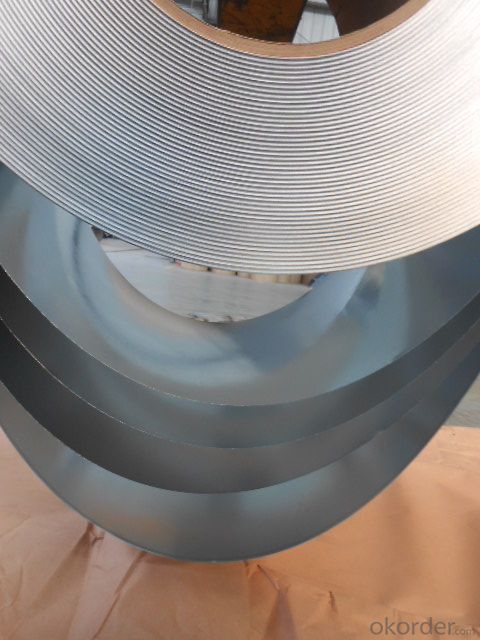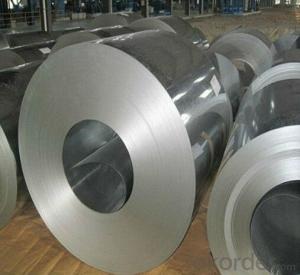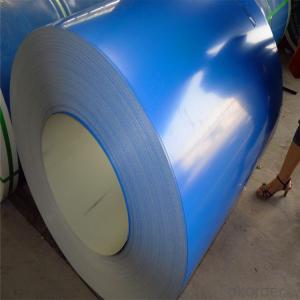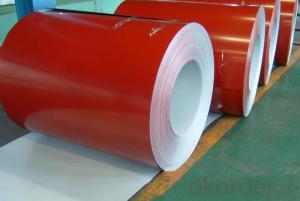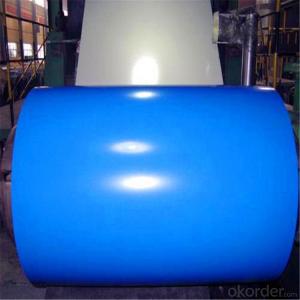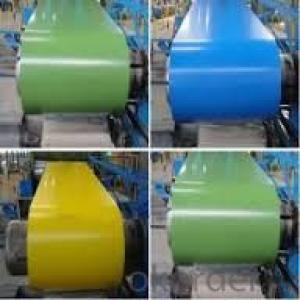STEEL COIL/PPGI & HDGI /HENGJI manufacturer china mainland
- Loading Port:
- Shekou
- Payment Terms:
- TT OR LC
- Min Order Qty:
- 50 m.t.
- Supply Capability:
- 100000 m.t./month
OKorder Service Pledge
OKorder Financial Service
You Might Also Like
Specifications
PPGI&GI STEEL COILS
ISO9001&CE
DX51D JIS SGCC 3302
HIGH QUALITY WITH LOW PRICE
PPGI&GI STEEL COILS
HIGH QUALITY WITH LOW PRICE
PPGI&GI STEEL COILS
ISO9001&CE
DX51D JIS SGCC 3302
HIGH QUALITY WITH LOW PRICE
specification
| Product name | PPGI&GI | ||
| Zinc | 40-275g per sqm | ||
| Thickness | 0.2-1.2mm | ||
| Width | 914-1250mm | ||
| Coil weight(single coil) | 3-10Ton | ||
| Inner diameter of coil | 508mm or 610mm | ||
| Colour choice | All RAL colour is available, metallic color, sample for color matching | ||
| Certificate | ISO9001&CE | ||
| Type | Manufacturer | ||
| Package | Standard export seaworthy packing | ||
| Payment | L/C&T/T | ||
| Material | DX51D,JIS SGCC 3302 | ||
| Painting | NIPPON , KCC | ||
| GRADE | SGCC, DX51D ,SPCC,CGCC | ||
our production
Prepainted steel coil features:
1. Zinc coating :40-120g(as reauired)
2. thickness:0.17-1.2mm
3. width:914-1250mm(900mm,1215mm,1250mm,1000mm the most common)
4. coil id:508m610mm
5. coil weight: 3-12(as required)
6. surface treatment:RAL color
Galvanized steel coil features:
1. Zinc coating :40-275g( as required)
2. thickness:0.17-1.2mm
3. width:914-1250mm(900mm,1215mm,1250mm,1000mm the most common)
4. coil id:508m610mm
5. coil weight: 3-12(as required)
6. surface treatment: cremated, oiled, skin passed
7. Spangle: regular,small, zero
8.Application: With excellent cold bending molded manufacturablity, good decoration effect, strong anti-corrosion ability, galvanized steel coils and sheets are also pollution-free and easily recycled.
Accordingly, they can be used as final products and basic plates of color coated steel coils and widely applied in construction, home appliances, decoration, ect.
- Q: Hello, Do I make any damage to my stainless steel sink by cleaning it with clorox? Thank you!
- Here okorder ... They suggest filling sink with 50/50 solution of water and bleach. Let soak for 15 minutes and then rinse well. Extended exposure to bleach may cause pitting. Lots of good advice at the site. Check it out. More advice on SSS care: 64.233.167.104/search?q=cache:YZS... DO NOT USE STEEL WOOL!
- Q: Can steel coils be painted?
- Yes, steel coils can be painted. Painting steel coils not only enhances their aesthetic appearance but also provides a protective coating against corrosion and other environmental factors. The coils are typically pre-treated and primed before the application of paint to ensure proper adhesion and durability.
- Q: How much do steel coils weigh?
- The weight of steel coils is subject to variation, which is determined by multiple factors including coil thickness, width, length, and the particular type of steel employed. In general, steel coils can range in weight from a few hundred pounds to several tons. It should be emphasized that the measurement of steel coils typically revolves around their weight per unit area, referred to as the "basis weight" or "coil weight".
- Q: What are the common applications of coated steel coils?
- Some common applications of coated steel coils include manufacturing of automotive parts, construction materials such as roofing and siding, appliances, and electrical equipment. They are also used in the production of household goods such as furniture, shelving, and storage racks. Additionally, coated steel coils find applications in the transportation industry for manufacturing trailers, shipping containers, and railway cars due to their durability and corrosion resistance.
- Q: How are steel coils used in the production of steel cables?
- Steel coils are used in the production of steel cables as they serve as the raw material for cable manufacturing. The steel coils are unwound and then processed through a series of steps, such as drawing, stranding, and coating, to transform them into steel cables of various sizes and strengths. These cables are widely used in industries like construction, transportation, and telecommunications for purposes such as supporting structures, lifting heavy objects, and transmitting electrical signals.
- Q: I heard that the stores don't sale Steel Legion anymore...Is this true..Also I want to know why they cost more than regular Imperial Guardsmen..Such as Cadian...Do they have something Special?Also what do I need to buy to have a complete Steel Legion army..I need two squads of troops of 20's?and two sergeants for each squad.and one commiser?Well I;m guessing..someone please help...I havent played in about 4 years.
- The stock at various shops may vary, but you can buy Steel Legion miniatures through the mail order, or the Internet from GW. Cadian troopers are plastic, There are no plastic Steel Legion troops. The plastic models are (a tiny bit) not so horribly expensive as the metallic ones. The minimum requirements for your force vary from mission to mission, but a good start is 1 HQ unit 2 Troop choices. Also, the total points cost of the battle is to be considered. (Usually 500, 1000, or 1500 points.) What you described is one possible choice, although the size of IG squads is 10 and not 20. And you must include a command squad, the commissar is optional. You might change the other 20 troops for a tank, or a squad of Sentinels. Happy gaming!
- Q: How are steel coils processed into finished products?
- Steel coils are processed into finished products through a series of steps that typically include uncoiling, leveling, cutting, and shaping. After uncoiling, the steel coils are passed through a leveling machine to remove any unevenness. Then, they are cut into specific sizes and shapes using different cutting techniques such as shearing or slitting. Finally, the cut steel pieces are shaped through various processes like bending, welding, and machining to produce the desired finished products.
- Q: How are steel coils used in the production of rail tracks?
- Steel coils are used in the production of rail tracks as they are processed and shaped into rails. These coils are transformed into long, straight sections of steel that form the main structure of the track. This process involves cutting, bending, and welding the coils to create the desired rail shape and dimensions. The resulting rails are then installed on rail beds to provide a durable and reliable foundation for trains to run on.
- Q: is surgical steel or sterling silver belly button rings better for you? surgical is really cheap so its sketch and i justt dont want it to mess up
- This Site Might Help You. RE: surgical steel or sterling silver belly button rings? is surgical steel or sterling silver belly button rings better for you? surgical is really cheap so its sketch and i justt dont want it to mess up
- Q: Is infi steel as good as busse knives make it sound. If so why don't any other brands use it. Also are there any tactical folders that use infi steel. If infi isn't as good as it's cracked up to be then what is the best alternative.
- infi is a brand name steel. They have it specially made and the composition is supposed to be a secret though it is similar to 52100. I have used knives from Busse and their sister company Swamprat Knives. Both companies make good knives, even if their advertising may be a bit odd. They are pricey, but are also very good knives with good steel and ergonomics. If you have the money they are a good option. I don't know if Swamprat still makes knives, but I have a 4'' folder from them in s30v that is great. Benchmade makes some great knives as well, though not nearly a custom as Busse. Take a look at the 913, a 3.6'' D2 blade that was a spring release and G10 handle for a good price. An excellent knife.
Send your message to us
STEEL COIL/PPGI & HDGI /HENGJI manufacturer china mainland
- Loading Port:
- Shekou
- Payment Terms:
- TT OR LC
- Min Order Qty:
- 50 m.t.
- Supply Capability:
- 100000 m.t./month
OKorder Service Pledge
OKorder Financial Service
Similar products
Hot products
Hot Searches
Related keywords



